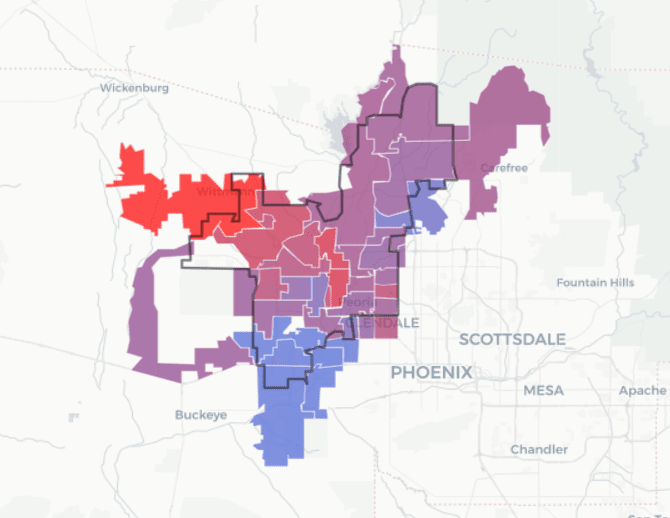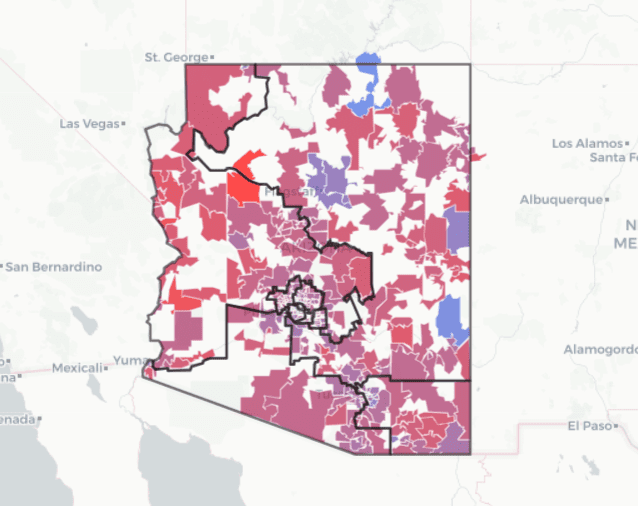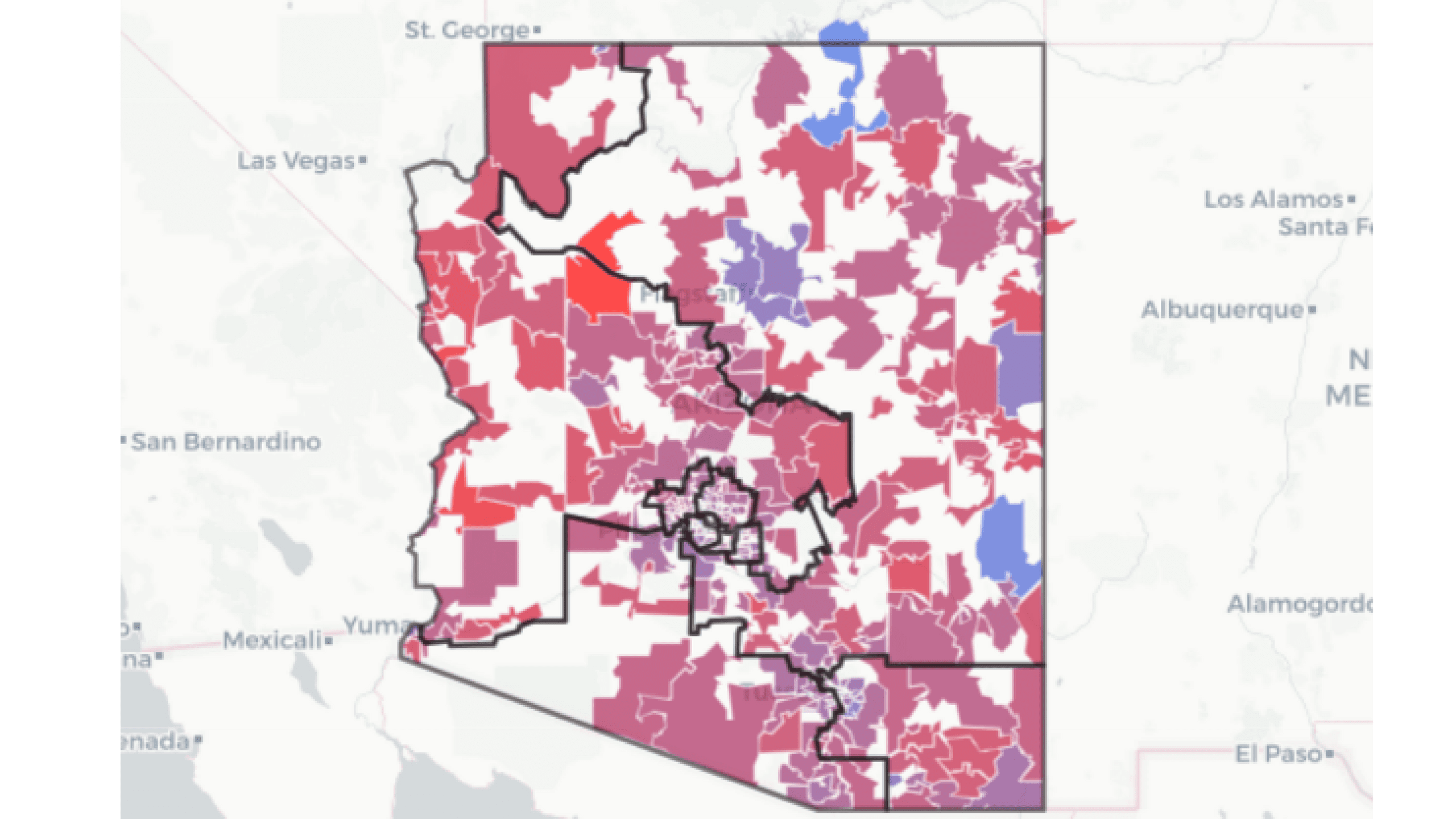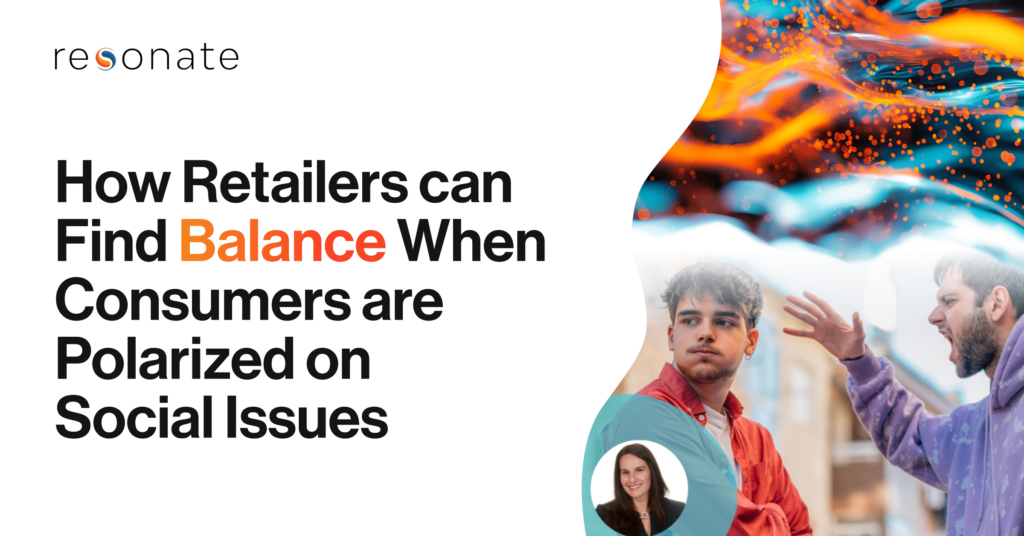In a nationally watched Arizona special election last month, a Democrat came close to victory in a district Republicans won by a 37% margin in 2016. The results in Arizona came off the heels of another special election in Pennsylvania, where a Democrat bested a Republican in a district they didn’t even bother to challenge last cycle.
Conventional intelligence suggests the early special election results are a bellwether for the 2018 midterm elections. Perhaps they are…but if we are to listen closely and objectively, what do these bellwethers actually indicate for campaigns throughout the country?
At Resonate, we leveraged artificial intelligence (AI) models to gain an advanced and unbiased understanding of how voter behavior in AZ-08, home to last month’s special, and media consumption patterns throughout Arizona can help inform targeting and messaging strategies this cycle.
Digital Media Bubbles in AZ-08 Called for Persuasion Tactics

This map represents the average level of liberal-conservative bias in online news consumed by AZ-08 voters in the months leading up to the April 24th election. We call these pockets of political news consumption, “media bubbles”.
If the red on the map is indicative of conservative media that was consumed, does this look like a district Republicans carried by 37% less than 2 years ago?
The fact is voter patterns in AZ-08 drastically changed in a short period of time…and our models suggest this is happening on a real-time basis in districts throughout the nation.
By mapping out these media bubbles, our data showed the best way to win a plurality of the vote in AZ-08 was by adopting a persuasion plan aimed at independent-minded voters. Represented in the purple that dominates the above map, these voters were ready for messages that appealed to their policy positions and values, not just party bias or voter history.
Statewide Media Bubbles Reinforce Swing Vote Significance

This map represents the average level of liberal-conservative bias in digital news consumed by voters statewide. White space represents low census areas that fail to provide adequate scale.
Even statewide behavioral patterns reinforce the role independent and swing voters will play in deciding races this year, including the Gubernatorial and U.S. Senate elections. As the map shows, staunch conservative and liberal media consumption is few and far between.
To add another layer of significance to the Independent voter, AI reveals that only 21% of registered voters in Arizona will choose a candidate based on their party affiliation.
The Bellwether Political Campaigns Should Follow
Early election results and behavioral patterns in battlegrounds like Arizona highlight the essential role of 2018 independents – even in races that were recently considered foregone conclusions.
To successfully track and engage these audiences, campaigns should embrace AI-driven solutions that keep speed with quickly evolving voter patterns. These tools are also capable of engaging an entire constituency, not just a broad party platform that is sure to let some voters fall through the cracks. Come Election Day, those voters may very well decide the winners and losers.
Want to learn more about media bubbles? Check out Resonate’s free SlideShare presentation that provides a detailed assessment of the media bubble phenomena in modern day politics: Breaching the Bubble: Establishing an Effective Counter Narrative in an Era of Echo Chambers.



